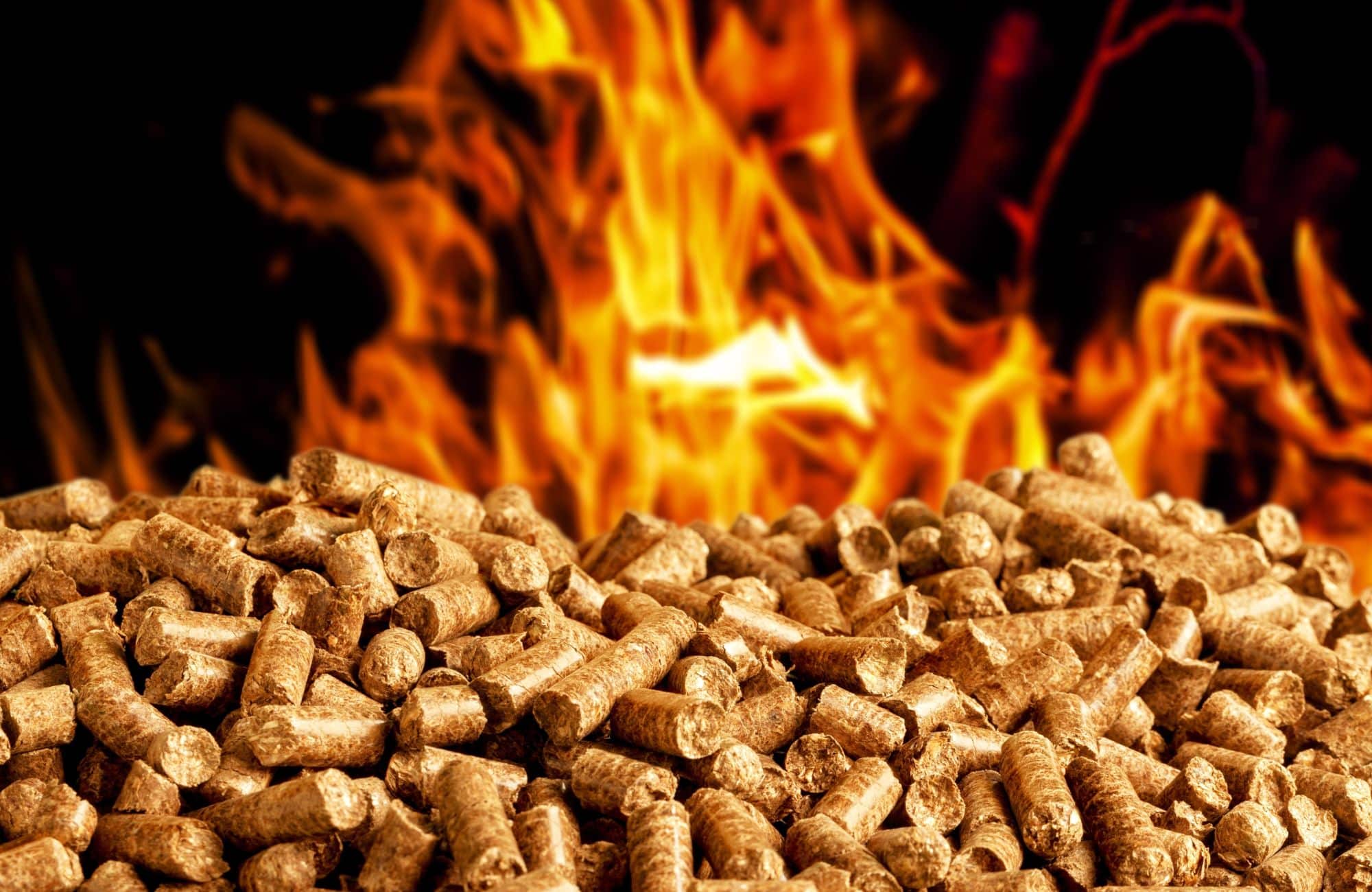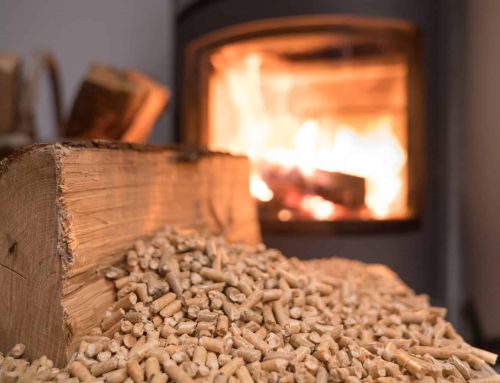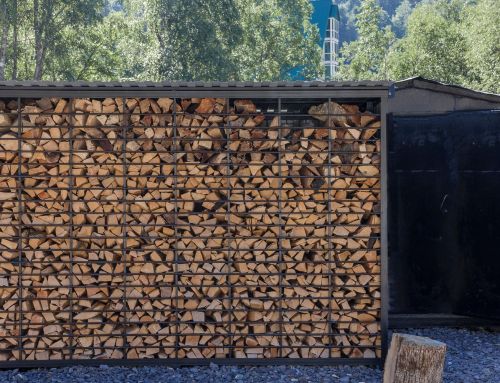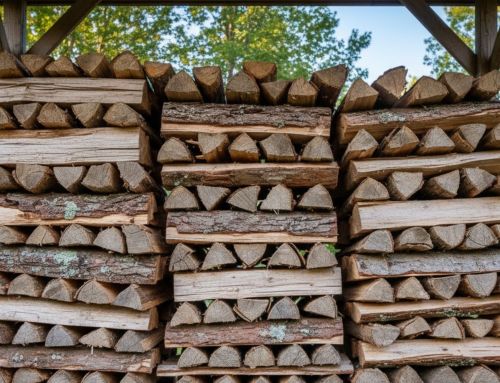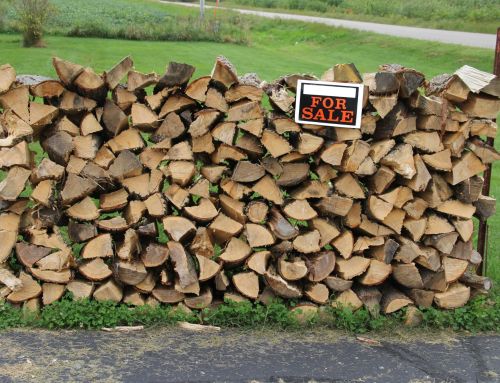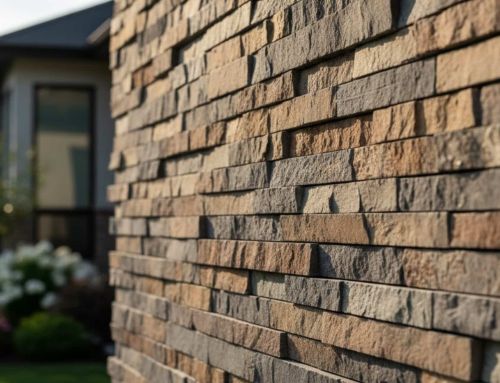Wood stove pellets have become one of the most dependable and cost-effective heating fuels for Massachusetts homeowners. As winters get colder and heating oil prices continue to rise, many families are turning to pellet stoves as a cleaner, more efficient way to stay warm. The key to getting the best performance out of any pellet stove isn’t just the stove itself. It’s the quality of the pellets you choose.
The right pellets burn hotter, last longer, and produce far less ash. The wrong pellets can lead to clinkers, weak heat output, and constant maintenance headaches. This guide covers everything you need to know about choosing wood stove pellets and understanding quality standards. It explains how to calculate how much fuel you’ll need and how to store pellets properly. Finally, this guide includes where to buy pellets from trusted local suppliers like Old Station Outdoor & Landscape Supply.
What Are Wood Stove Pellets and How Do They Work?
Wood stove pellets are small, dense cylinders made from compressed wood materials like sawdust and clean wood fiber by-products. Manufacturers turn these materials into clean-burning pellets that provide consistent heat and strong energy efficiency. Pellet stoves feed pellets through an automated system that controls airflow for steady, low-smoke combustion. Because pellet fuel is tightly compressed, it delivers more heat per pound and longer burn times than firewood. Key factors such as pellet density, moisture content, and BTU rating directly influence heating performance. High-quality pellets burn cleaner, reduce clinkers, and maintain strong heat output during cold Massachusetts winters.
Types of Wood Stove Pellets: Hardwood vs Softwood
Choosing between hardwood and softwood pellets is one of the biggest decisions homeowners face. Both types are made from 100% wood fiber, but they burn differently due to variations in density, resin content, and composition.
Hardwood pellets are made from woods like oak, maple, and hickory. These woods are well known for being dense and strong. While hardwood pellets are popular because of their reputation in firewood, they don’t always outperform softwood in pellet form. Hardwood pellets can offer steady heat output and generally produce moderate ash. Some homeowners prefer them because they feel familiar and perform consistently.
Softwood pellets are made from species like fir and larch. They naturally contain more resins. These resins burn hotter and more efficiently, which is why softwood pellets often deliver higher BTU ratings. Because softwood breaks down into finer fibers during the milling process, manufacturers can compress it more tightly, resulting in a clean, hot burn with lower ash production.
Which Is Better?
Here’s a quick comparison to guide your decision:
| Feature | Hardwood Pellets | Softwood Pellets |
|---|---|---|
| BTU Output | Moderate | Higher |
| Ash Production | Moderate | Low |
| Burn Time | Good | Very Long |
| Cost | Usually Lower | Often Higher |
| Best Use | Moderate cold seasons | Harsh winters |
If your goal is maximum heat during freezing Massachusetts nights, softwood might be the better choice. If you want a solid, dependable burn at a lower cost, hardwood can still meet your needs.
How to Choose the Best Wood Stove Pellets
Finding high-quality wood stove pellets doesn’t have to feel overwhelming. Several key traits separate top-performing pellets from those that burn poorly or create too much ash. Before choosing a brand, it helps to understand the most important factors that affect heat output, cleanliness, and overall stove performance. Here are the qualities to look for:
- Low ash content: Premium pellets should have less than 1% ash. Low ash keeps your stove cleaner and reduces how often you need to empty the burn pot.
- High BTU rating: BTU measures heat output. Higher BTU pellets warm your home faster and allow your stove to run more efficiently.
- Low moisture levels: Pellets should be dry, firm, and smooth. Aim for a moisture content of 8% or below to avoid uneven burning and excess smoke.
- 100% wood fiber composition: Quality pellets contain no additives, fillers, or binders. Pure wood fiber produces a cleaner, stronger burn with fewer clinkers.
- Strong packaging: Sturdy, sealed bags prevent moisture absorption, especially in Massachusetts, where humidity changes often. Secure packaging protects pellets during storage and delivery.
- Reliable local supplier: Old Station Outdoor & Landscape Supply provides clean, well-stored pellets that meet the quality standards needed for efficient winter heating.
How Much Pellet Fuel Do You Need for Winter?
Most new pellet stove owners want to know how much fuel they’ll need for winter. A typical Massachusetts home uses two to four tons each season, depending on size, insulation, and stove efficiency. A single 40-pound bag usually lasts 12 to 24 hours, and one ton contains 50 bags. Therefore, colder months or constant stove use can increase your overall consumption.
A medium-sized home in Norton may burn around three tons each winter. Larger homes or older properties may need closer to four tons, while smaller or efficient homes may use around two tons. Tracking your usage early in the season provides a clearer estimate. It is also smart to buy pellets early, before demand increases across New England.
Wood Stove Pellets vs Other Heating Options
Pellet heating stands out when compared to traditional options like heating oil, propane, and electric heat. Many homeowners prefer pellets because they deliver steady warmth and predictable costs during winter. The table below highlights how wood stove pellets compare to other common heating choices in terms of cost, efficiency, and environmental impact.
| Heating Option | Cost per BTU | Efficiency | Environmental Impact | Stability of Price | Overall Heating Experience |
|---|---|---|---|---|---|
| Wood Stove Pellets | Lower than oil and propane | High and consistent due to pellet density | Low emissions; made from recycled wood fiber | Stable pricing year to year | Steady, even heat with strong comfort control |
| Heating Oil | Higher and fluctuates widely | Moderate efficiency | Higher emissions from fossil fuels | Highly unstable pricing | Strong heat but inconsistent cost |
| Propane | High cost per BTU | High efficiency | Lower emissions than oil, but still fossil-based | Prices fluctuate seasonally | Good heat, but expensive during cold months |
| Electric Heat | Expensive in cold climates | Moderate to high, depending on the system | Clean at point-of-use; depends on power source | Tied to electric grid rates | It can be costly during peak demand |
| Firewood | Variable depending on the source | Moderate and inconsistent | Natural, but produces smoke and particulates | Seasonal variations | Traditional heat, but less predictable output |
Storage and Handling Tips for Wood Stove Pellets
Storing pellets properly is essential for maintaining good burn quality throughout the winter. Because pellets absorb moisture easily, it’s important to keep them in a dry, well-ventilated area such as a garage, shed, or indoor storage room. When storing several tons at home, place the bags on pallets or shelves to keep them off the floor and away from moisture that can seep through concrete. Choose a space with stable temperatures, and always use damaged or opened bags first to prevent humidity from affecting the pellets.
Pellets can last more than a year when stored correctly, but poorly stored pellets may crumble, create excess dust, or lose efficiency. These changes lead to more ash, clinkers, and reduced heat output. To avoid issues, handle bags carefully to prevent punctures, and if using a delivery service, move the bags indoors or cover them quickly to protect them from rain or snow. Proper storage and handling help ensure your pellet stove performs at its best all season long.
Signs You’re Using Low-Quality Pellets
Identifying low-quality pellets early can save you from poor heat output and unnecessary stove maintenance. Many performance issues come from pellets that were manufactured poorly or stored in poor conditions. If you notice any of the signs below, your pellets may not be meeting the quality standards needed for efficient heating:
- Excessive ash buildup: Low-quality pellets leave heavy ash in the burn pot, forcing more frequent cleanouts.
- Clinkers or hardened deposits: Poor pellets often create clinkers that disrupt combustion and require manual removal.
- Weak or inconsistent heat: Pellets that burn unevenly or produce weak heat output often lack proper density or composition.
- Large amounts of pellet dust (fines): Dust at the bottom of the bag indicates low density or poor manufacturing control, leading to a dirtier burn.
- Inconsistent pellet length: Pellets that crumble or vary widely in size can feed unevenly and affect burn performance.
- Moist or foul-smelling pellets: A damp feel or unpleasant odor signals moisture contamination, causing uneven burning and potential stove issues.
Benefits of Premium Wood Pellets
Many Massachusetts homeowners choose premium wood pellets because they burn hotter, cleaner, and more efficiently than standard options. Premium pellets produce very little ash, which helps keep the stove cleaner and reduces maintenance throughout the winter. Their lower moisture content and higher density allow them to burn longer and more consistently, offering dependable heat even during harsh New England temperatures. This improved performance can make a noticeable difference in both comfort and overall heating costs.
Premium pellets also offer better durability and packaging, which helps protect the fuel during storage and delivery. This is especially useful for homeowners storing several tons of pellets at home. Because premium pellets create fewer clinkers and burn more evenly, they make stove operation easier and improve long-term stove health. Although they cost slightly more upfront, many homeowners feel the improved efficiency and reduced maintenance make them a worthwhile investment.
Conclusion
Heating with wood stove pellets is one of the most efficient and cost-effective ways to stay warm during long Massachusetts winters. Choosing the right pellets and understanding factors like BTU output, ash content, and proper storage helps your stove run cleaner, hotter, and more reliably. With the right fuel and preparation, you can enjoy steady, comfortable heat throughout even the coldest New England nights.
At Old Station Outdoor & Landscape Supply, we offer well-stored, high-quality wood pellets that deliver strong performance and dependable heat all season long. Our team can help you choose the right pellet type for your home and provide guidance on storage, usage, and winter preparation. If you’re ready to stock up on reliable fuel for the season, contact us to learn more.
FAQs
Can you burn pellets in a wood stove?
You cannot burn pellets directly in a traditional wood stove because wood stoves are not designed to feed or ventilate pellet fuel properly. However, you can sometimes use a pellet basket insert, but performance will not match that of a true pellet stove. For best results, pellets should be burned only in a stove built for pellet fuel.
Can you burn wood in a pellet stove?
You cannot burn wood in a pellet stove because pellet stoves are engineered specifically for compressed pellet fuel. Burning wood logs or scraps can damage the stove, disrupt airflow, and create safety hazards. A pellet stove should only use wood stove pellets or approved pellet fuel.
How to make wood pellets for a pellet stove?
To make wood pellets for a pellet stove, manufacturers grind clean wood fiber into fine material, remove moisture, and compress it under high pressure to form dense pellets. This process requires specialized equipment that ensures consistent size, density, and moisture levels. Home production is not recommended because improper pellets can clog or damage a stove.
Where to buy wood stove pellets?
You can buy wood stove pellets at local landscape supply centers, hardware stores, or specialized pellet suppliers. For Massachusetts homeowners, Old Station Outdoor & Landscape Supply offers clean, well-stored pellets ready for seasonal use. Buying locally helps ensure fresher inventory and proper storage conditions.

